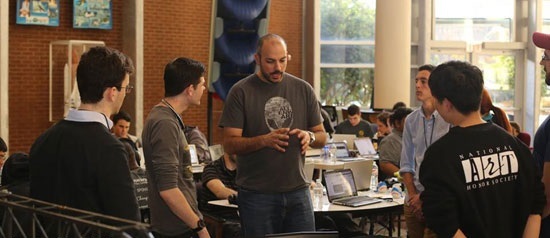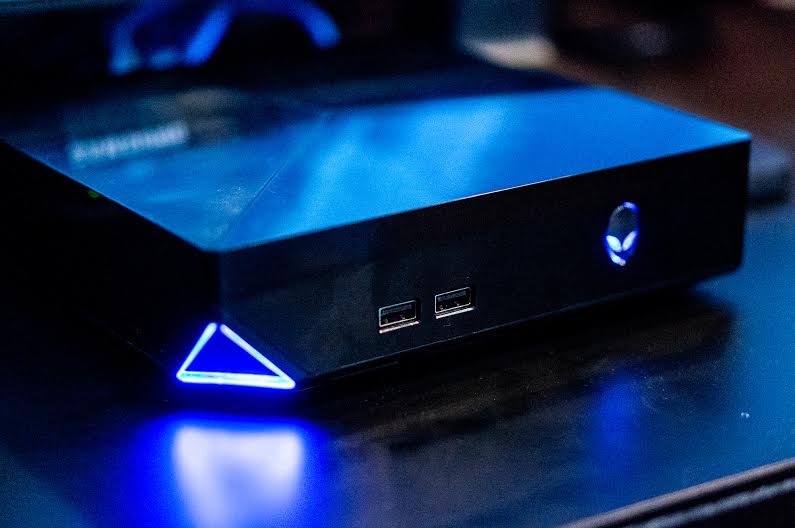The State of PC and Console Release Cycles, According to Alienware
"PC has won."
GameSpot had the chance to sit down with Alienware co-founder and vice president Frank Azor during PAX Australia 2016, to discuss the current state of the PC market.

Azor has been with the company for 18 years, starting when he was merely 16 years old. “I was in high school,” he said. “A family friend told me he was working with a couple of guys that were started a computer company, and they were looking for some help. And that was it!” Azor began by working for free with the company that would eventually become Alienware. “I thought I was too young and inexperienced for what they were looking for,” he said. “It was four of us initially, At the time we were taking off-the-shelf components and assembling them together and optimising the machines for playing video games. From there things progressed, we started doing really well, a lot of copycats came in, we figured we had to build our own products, so I quit college to focus 100% on Alienware and I created the product group.” Azor worked hard, right through the Dell acquisition, and eventually took over the entire Alienware business in 2011.
The PC market has changed over the course of those years, yet Alienware has remained steadfast in targeting the high-end gaming audience, through the production of expensive but high-performing desktop PCs, and notebooks.
With the console platforms moving to a more frequent release cycle, we were curious about how this would affect Alienware’s position in the market. “It affects us a bit, yeah,” Azor told us. “The console market and the PC market have converged in ways that we’ve never really seen before. Consoles look more like PCs, and PCs are starting to look more like consoles.” It was at this point that Azor started to smile, it seemed this line of questioning played into his hands. “The console guys have realised they can’t operate on seven year cadences anymore, because they can’t keep up with the amount of innovation that’s going on in the industry, with HDR, 4K, VR, and the long path we have ahead of us in VR evolution. They’re having to evolve in order to survive, to be a lot more like the PC side, where they can’t come in with a $300 or $400 piece of subsidised hardware. They can maybe only afford to subsidise for $50 or $100, because the lifecycle they’re going to have to recoup that investment over the lifecycle or the customer’s journey is going to be two or three years, not the seven years they had before.”
“Console architecture, funnily enough, is more PC-like than ever before, so I think that’s a real testament that PC has won,” he crowed.

Azor also believes that the upcoming major console refreshes are a positioning opportunity for Alienware. “We’re not trying to actively compete against consoles,” he said, somewhat incongruously with his previous statement, “we see them as complimentary devices. We’re trying to focus on gamers and helping them as much as possible. There are some games that play best on PC, and some that play best on console. As long as you’re playing games, as long as the games that we’re bringing to market are fun and responsible, as long as the community is healthy, then everyone is winning in the industry.”
Well, if Alienware doesn’t see itself as competing with console manufacturers, what about other PC manufacturers? What is it about Alienware that differentiates it from its major competitors in the gaming notebook market?
“We’re going after a different use-case that is very different, and a lot of times the polar opposite to what Razor is chasing out there. Their priority is around dimensions, our priority is around quality, performance, upgradability, and comfort,” Azor said. “Longevity, keyboard comfort, long battery life, performance. So wherever our dimensions end up after we’ve made those key decisions, that’s where they end up. Some of those other companies out there will say we’re going to develop the fastest notebook we can, at 18mm or 20mm. All those other factors get thrown out the window.”

Azor went on to act out a fictional conversation he believes to be representative of the market position of some Alienware competitors.
“Okay we have to reduce the Z-height and the travel on the keyboard in order to hit our form factor target. Okay, go. Reduce it.”
“No upgradeability, because that adds Z-height to the product. Okay, remove upgradeability.”
“Cut the battery life. Throttle the graphics card. Put no overhead into what the graphics and CPU can offer.”
“All of that might be fine in year one,” Azor said, firmly, “but after year one your thermal efficiency is going to begin to get reduced, and you’ve built no overhead into your thermal module. So that system is going to begin throttling, if not overheating, if not bluescreening. We know that you have to build in overhead, and that overhead drives dimensions.”
“I’m not going to name any names in particular, “Azor said, with a knowing look on his face, “but some folks are more interested in selling the computer on day one, without worrying about year four. We’re focused on the entire customer lifecycle, and their ability to resale that product, or use it for a very, very long time. That’s why we’re a little bit more expensive.”
Got a news tip or want to contact us directly? Email news@gamespot.com
Join the conversation